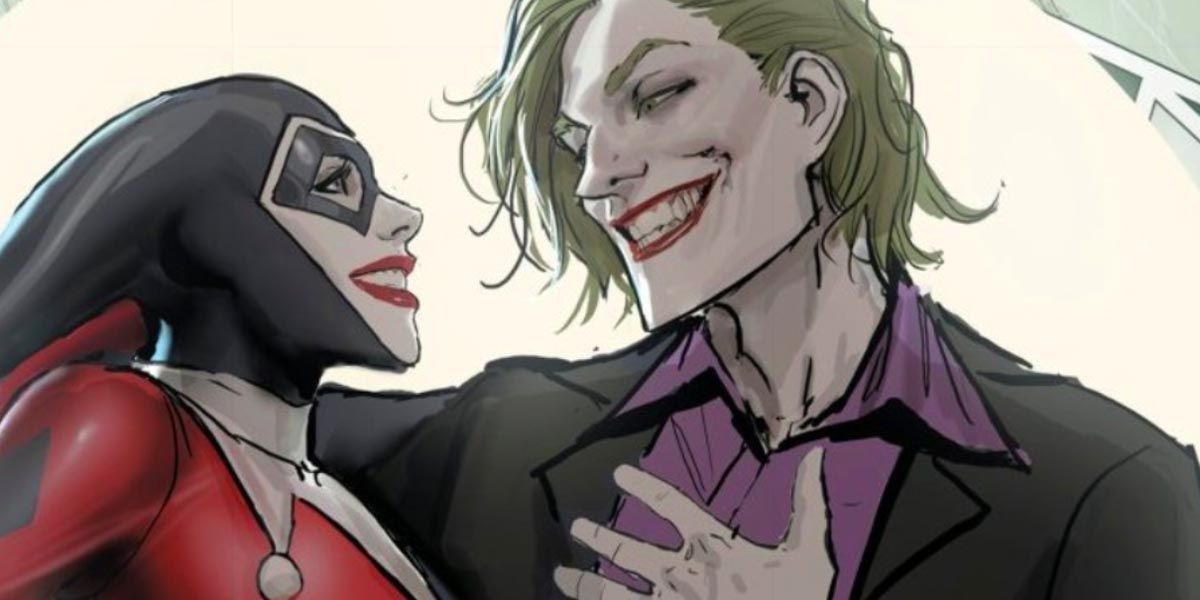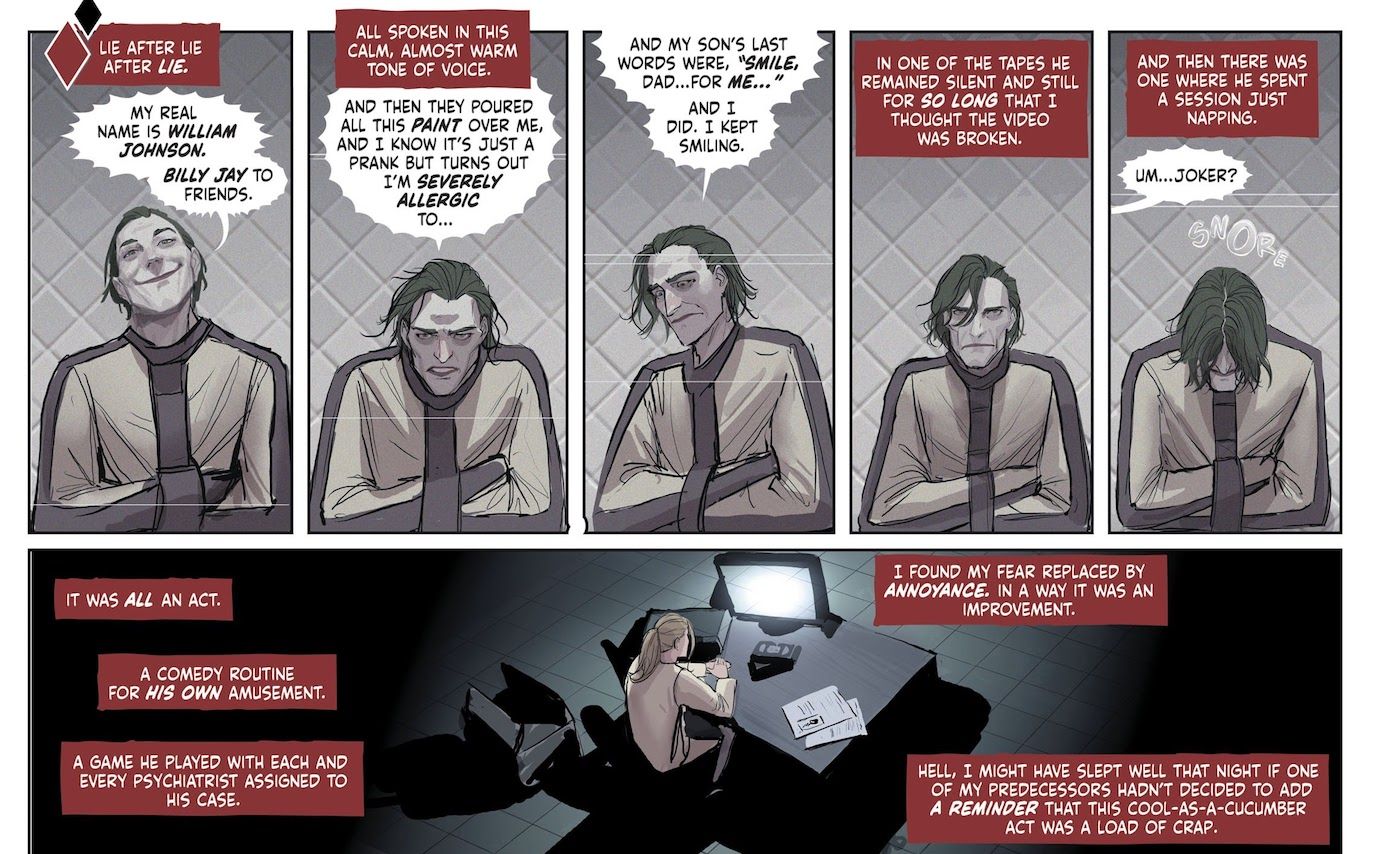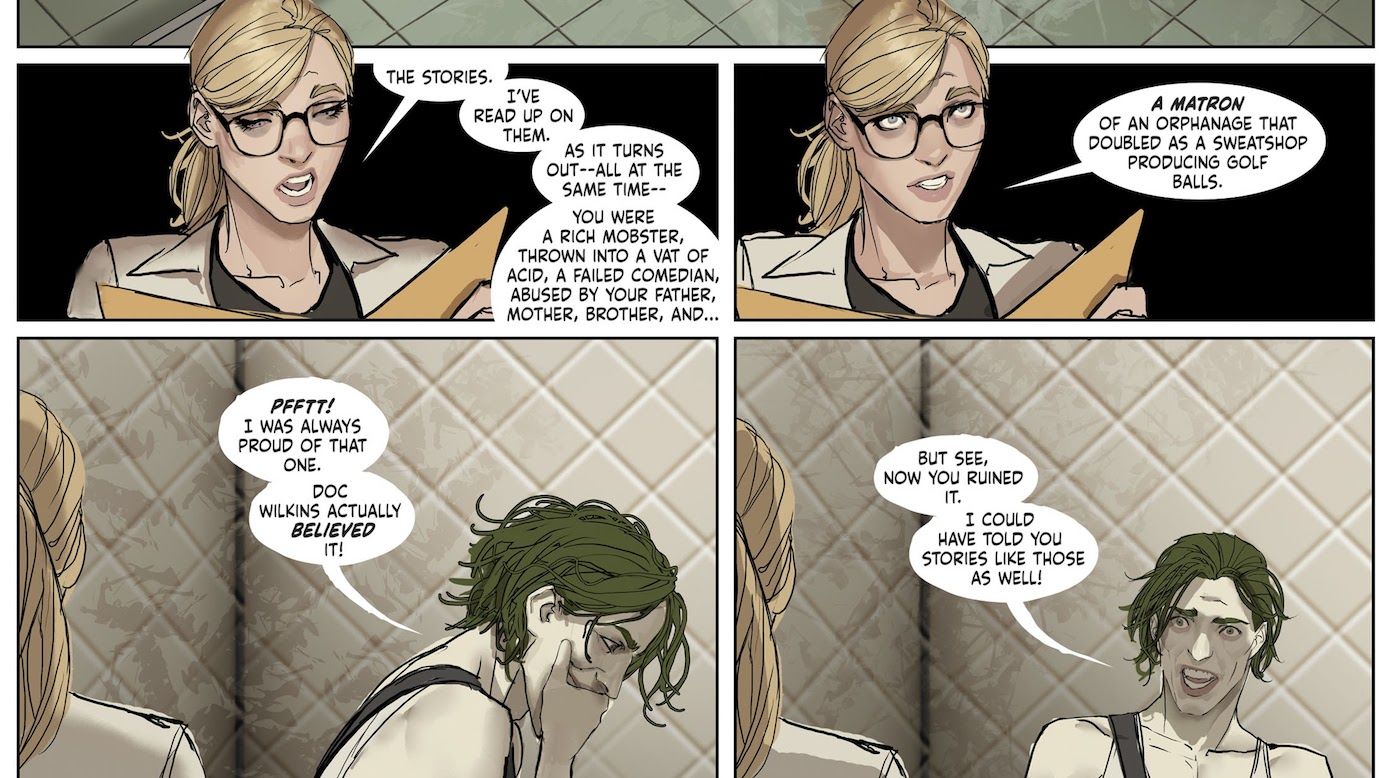WARNING: The following contains major spoilers for Harleen #1 by Stjepan Šejić and Gabriela Downie, on sale now.
Heath Ledger's Oscar-award winning performance as the Joker in Christoper Nolan's The Dark Knight remains, to this day, one of the gold standards for cinematic villains. And one of the most intriguing aspects of the late actor's portrayal was the character's multiple stories about how he came to be.
In Stjepan Šejić's Harleen, the writer/artist decided to lean into this conceit, and in so doing, he creates even more illusions and theatrics that the Clown Prince of Crime uses to baffle, bemuse and bewitch the lovestruck Dr. Harleen Quinzel.
Harleen's giving psychology lectures on the Gotham circuit, hoping to secure funding for her research. Eventually she gets the money she needs from Lucius Fox on behalf of Wayne Enterprises. Lucius is facilitating Bruce's goal of figuring out how he can prevent criminals from being created in the first place. It all stems from an incident in which he beat Joker mercilessly in public, an act of brutality Harleen witnessed.
Lucius' endorsement eventually lands her at Arkham Asylum under Hugo Strange, only for Harleen to grow bored with the everyday psychopaths she encounters. She wants a challenge and sees the Clown as just this.
She's not enamored just yet with "Mr. Jay," but she can't get him out of her mind after he almost shot her on that fateful night when Batman apprehended him. Her interest is really piqued, though, when she reviews his tapes with other psychiatrists and hears his origin story -- or rather multiple origin stories. This harkens back to the scene in Nolan's film in which Joker told Maggie Gyllenhaal's Rachel Dawes that he was a husband who cut scars into his face to please a wife depressed over their gambling debt. In fact, the question "would you like to know how I got these scars?" became a running gag in the film with the Joker also telling a tall tale to Michael Jai White's Mason Gambol about an abusive father who was a drinker and a fiend.
In Harleen, Joker says he became a villain after a fire killed his family, and to someone else he says he ended up in the circus (a homage to Dick Grayson), which led to a life of petty crime. But it doesn't end there. He also claims he was an orphan who was adopted by the mob and turned on the gangsters and that kids bullied and threw paint on him. He even makes up a story about being a heartbroken dad.
Harleen eventually confronts him during a therapy session. She calls his bluff on other lies in which he said he was a rich thug, a victim thrown into a vat of acid, a sweatshop worker making golf balls and a victim of sexual abuse by his family. Now, there's a chance any of these could be true but Joker admits that when confronted he likes to fool people for his amusement. He's undaunted when his ruse is exposed, however, telling the fascinated Harleen that it is how he gets off and it's what prevents him from getting bored.
Like his face, Joker wants his soul to be covered with make-up. It's the perfect nod to Ledger's Joker whose different stories about his origin seemed designed to disarm his opponents. The facade the character maintained was a brilliant narrative driver because with such a mysterious background, various smokescreen stories and a shadow of obscurity, we never knew who this villain truly was. And Bruce couldn't track anything to his past.
Šejić's Joker stands in the same light as an agent of chaos and destruction who we either know nothing or everything about. Ultimately, this uncertainty makes him hard to understand. And it's that aura of unpredictability when it comes to the Joker that makes Gotham quiver, or in Harleen's case, buckle at the knees.
Harleen #2 goes on sale Oct. 30.



